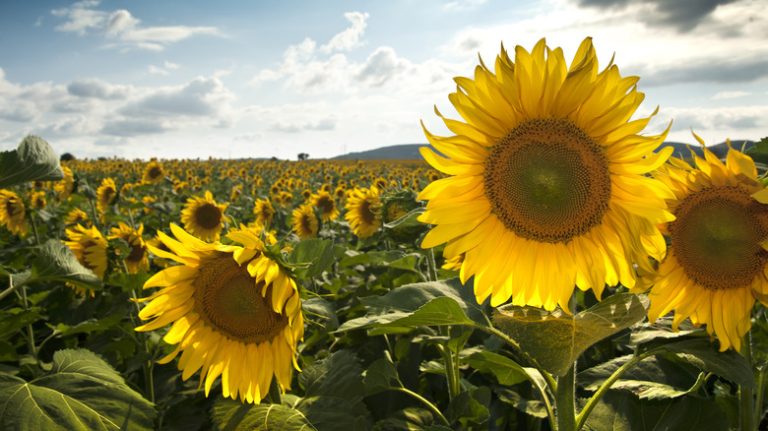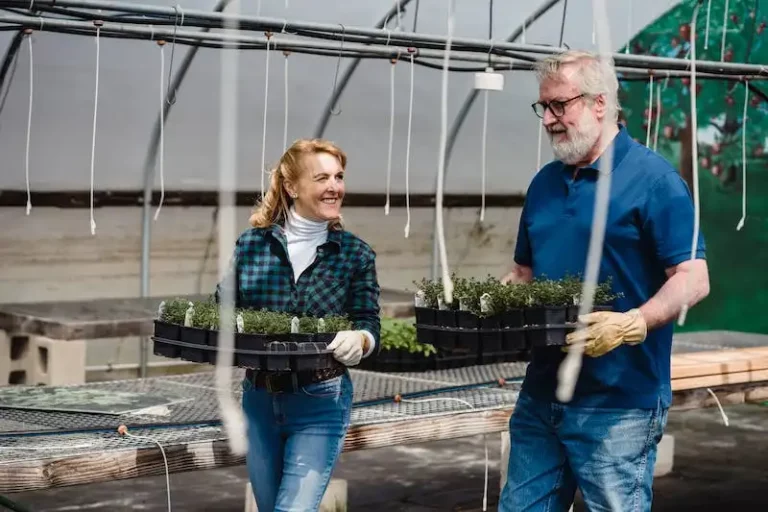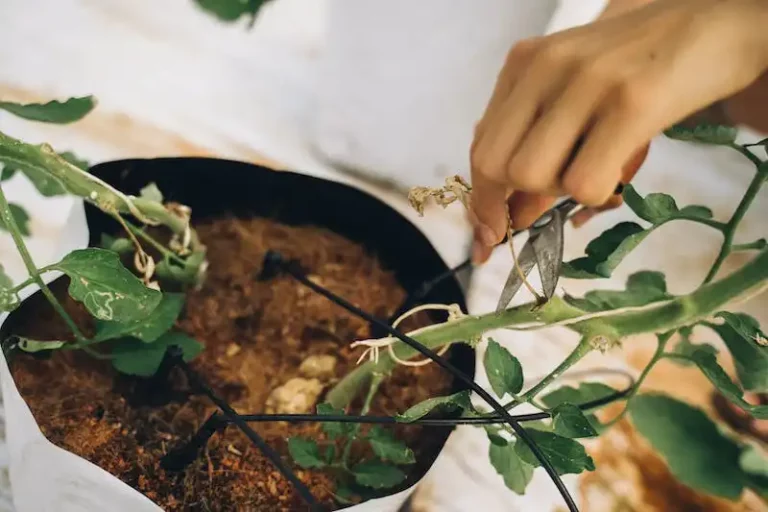Expanding your garden each season doesn’t necessarily need to cost any money. Dividing perennials is a great way to keep your garden healthy and create an abundance of plants to fill all the nooks and crannies of the yard. As plants mature, they can eventually become too large for their root system to support and start producing leggy and sparse growth. Different perennials will need to be divided at different times during the year, but for many, late summer is the perfect season. It will give your newly split plants ample time to acclimate before the cold weather approaches.
Many perennials will only need to be divided once every few years. When the time comes, start by digging a couple of inches around the plant’s base and near the roots, lifting it out of the ground gently. Performing this task after a recent watering will make the dirt easier to work with. Using a sharp garden tool, split the roots into even sections — as many as are needed based on the plant’s size. Once done, replant them immediately so roots won’t be at risk of drying out, and give them a plot nearly three times that of their rootball. Applying compost will aid with the plant transitioning into a new root system. As you begin combing through the garden and deciding which of your perennials need to be cleaved this year, here are some well-loved perennials that thrive after late-summer dividing.
Yellow alyssum
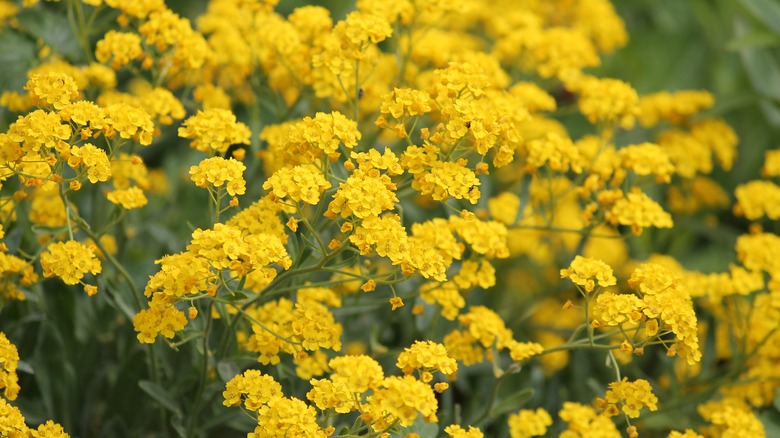
The yellow alyssum flower is native to Asia and Europe and has many nicknames for its small golden flowers and deep green foliage. Often referred to as a basket of gold, dwarf goldentuft, and madwort, this perennial is easy to care for and said to be quite hardy. Yellow alyssum can bloom twice in one season under the right conditions, and while it can grow in hardiness zones of 3 to 10, it’s less likely to flourish in zones above 7. These tiny, clustered flowers may only grow up to a foot tall but can reach as wide as 18 inches, so it’s important to keep from planting them too close together.
Many love this perennial because it effortlessly reseeds itself and is very tolerant in times of drought. However, its self-seeding can quickly get invasive if not maintained by dividing the plant when the blooming season has ended. Divide the roots into two or three parts and replant them in a new location. Pruning routinely will also limit the unwanted spread of seeds and encourage healthy growth. It’s essential to the plant’s health to avoid heavier soils that hold a lot of excess moisture, and full sunlight is needed. Deer won’t target yellow alyssum, but the flowers will attract crucial pollinators like butterflies and bees. You cannot go wrong with how you choose to add this perennial to your garden; whether in hanging baskets, garden containers, or flower beds, it’ll add the perfect yearly splash of color.
Bearded iris
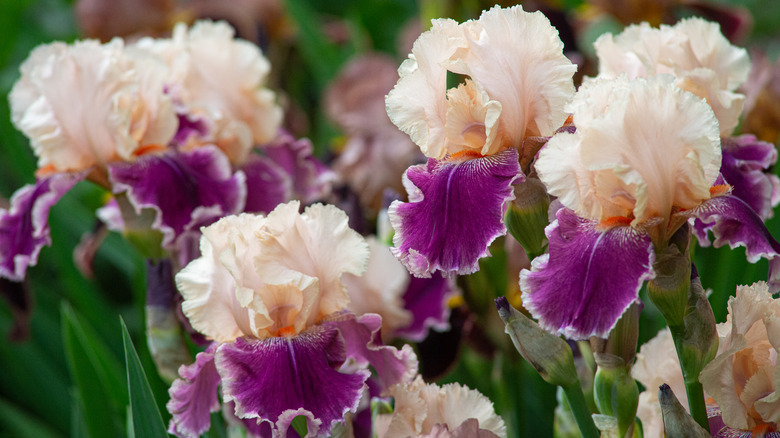
The bearded iris, also called the German iris, is adored for its various colors, sporting blues, purples, yellows, and pinks of all shades. However, along with its vibrant hues, the bearded iris has a unique petal display that features three outside petals falling low while three inner petals sit high, known as the standards. It receives its name from the fuzzy cylindrical beard in the flower’s middle. They bloom in late spring and early summer, offering sweet fragrances reminiscent of sugary treats like different sodas and chocolate.
While these perennials enjoy up to six hours of full sunlight a day, they benefit from some shade in extremely hot climates. Bearded irises also do well throughout winter, surviving in hardiness zones of 3 to 9. Soil-wise, you should avoid dense soils that retain water and instead opt for aerated, course loam. After reaching maturity, the plant will prefer much less water and drier conditions than when it was in its initial growing stages, and it’s best to divide them every three to five years. Able to bloom twice a season, different varieties reach different heights. Miniature dwarf and standard dwarf bearded irises reach a size of 5 to 16 inches tall, intermediate and border bearded irises can obtain 16 to 27 inches tall, and the tallest variety can see a height of up to 4 feet.
Easter lily
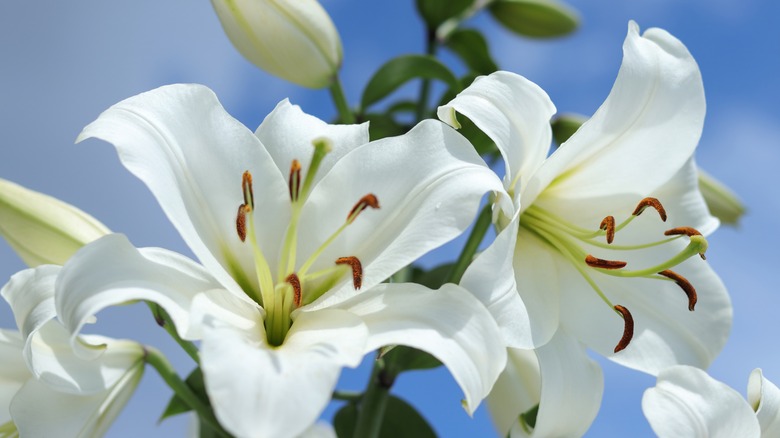
Mariia Romanyk/Shutterstock
The Easter lily, part of the Liliaceae family and native to Japan’s southern islands, is a popular flower every April when the holiday approaches. However, despite its name, Easter lilies naturally bloom in late summer and prefer up to 12 hours of sunlight daily. In order to minimize the light these lilies require and have them bloom in time for Easter, the bulbs are conditioned over weeks before being distributed to consumers. The bulbs bought from nurseries and grocery stores will thrive in bright, indirect light and do best in mild temperatures of 50 to 75 degrees Fahrenheit.
To keep your lilies from overcrowding and continue blooming in large, full florals, divide them once every three to four years at the end of the growing season and when the foliage has begun to wilt. Easter lilies will require consistently moist soil, but it’s important not to leave it overly soaked. A good rule of thumb is to water in the mornings when the top inch of the ground is dry. Mulch is also advised for these flowers, helping keep them cool in summer’s sweltering heat and protected from the harsh cold that winter brings. If cared for properly, these 3-foot white lilies will return season after season. Just remember, if you have cats, these lilies are highly toxic to your furry friends.
Oriental lily
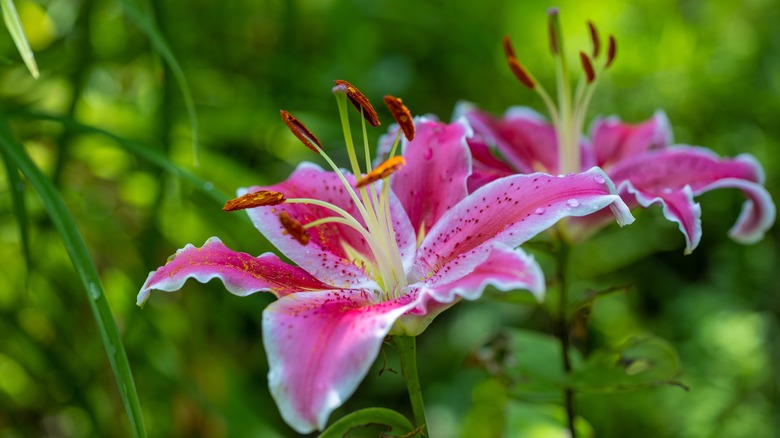
Viliam.M/Shutterstock
The oriental lily, also known as the Stargazer, is a hybrid lily that was bred in 1970 and has since been desired for its vibrant pinks, reds, and whites with bold stamens. This lily, in particular, is said to have a strong, sweet fragrance and is typically the last lily to flower each season, reaching full bloom in late summer and sometimes into early fall. While normally a hardy plant that does well on zones 3 to 9, alkaline soil is not recommended. However, acidic fertilizer can help with growth if alkaline cannot be avoided. Their soil should be loamy, well-draining, and moist but not too wet.
Oriental lilies thrive in the hotter summer heat, 80 to 90 degrees Fahrenheit. The flower prefers full sunlight, ideally, eight hours a day, but partial sun will also do the trick. Planting shorter annuals around your lilies will ensure no neighboring plants block their access to sunlight or overcrowd them, as they only reach 4 feet tall at full maturity. You should aim to divide your oriental lilies once every three years. Like all lilies, they are extremely toxic to cats, but beware of deer that absolutely love these for a snack.
Sweet woodruff
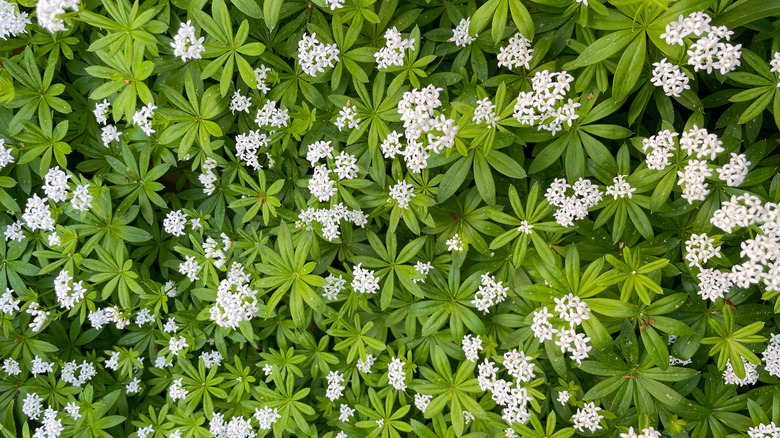
Animaflora/Getty Images
Sweet woodruff, also often called wild baby’s breath and sweet-scented bedstraw, is a creeping ground clover and herb known for its easy care and durability. With star-like foliage and small, clustered white flowers, it boasts a fresh scent and thrives in shaded environments. While preferring full shade and moist, aerated soil in 4 to 8 zones, it can adapt to dry conditions and partial sunlight. Too much sunlight, however, will cause the plant to burn.
Blooming in mid to late spring, this plant quickly multiplies and spreads throughout the garden. It can reach up to 2 feet tall, and a single plant can extend 18 inches wide. However, one should be careful with the clover because it can turn invasive if not appropriately regulated. A great way to prevent the overgrowth of sweet woodruff is by cutting it back whenever it creeps outside of its allocated area and adding spades along its perimeters. You can also divide it easily, removing portions of younger growth and replanting them where desired. Sweet woodruff is known to propagate easily, and fresh foilage adapts quicker than more mature shoots. This plant isn’t sought after by deer or rabbits, but it is edible and said to have a vanilla flavor if you are ever inclined to try it.

